LP: You mentioned that, because you'd worked for Collier's, you really weren't allowed to work for the Saturday Evening Post - that there was a sort of unwritten rule. So after Collier's folded, (SEP Art Director) Frank Kilker finally began giving you work...
(Below, Joe Bowler's first illustration for the SEP, August 1957)
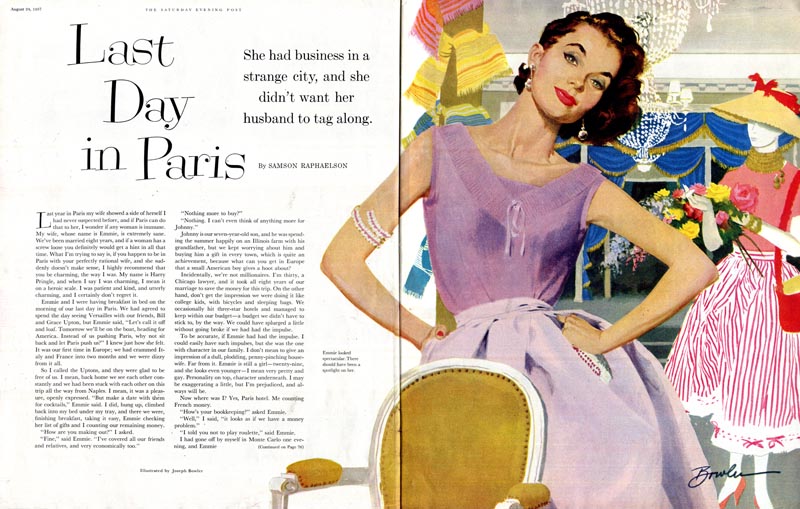
JB: (Joe chuckles) Yeah... Kilker was a great character. He'd come over every Friday with his little briefcase with a whole bunch of scripts in it. And we'd all go out to lunch and get bombed - they were all martini drinkers - and then he'd pass out these scripts for Coby and Joe and when I could finally get with them, I'd get mine (he chuckles again). These scripts always had a little yellow typewritten paper that gave you the sentence - the actual sentence - that was to be illustrated. And that was it!
(Below, from the back page of that same issue, a photo of Joe and his family and a mention that this is the first appearance of Joe Bowler, "an able young New Yorker.")
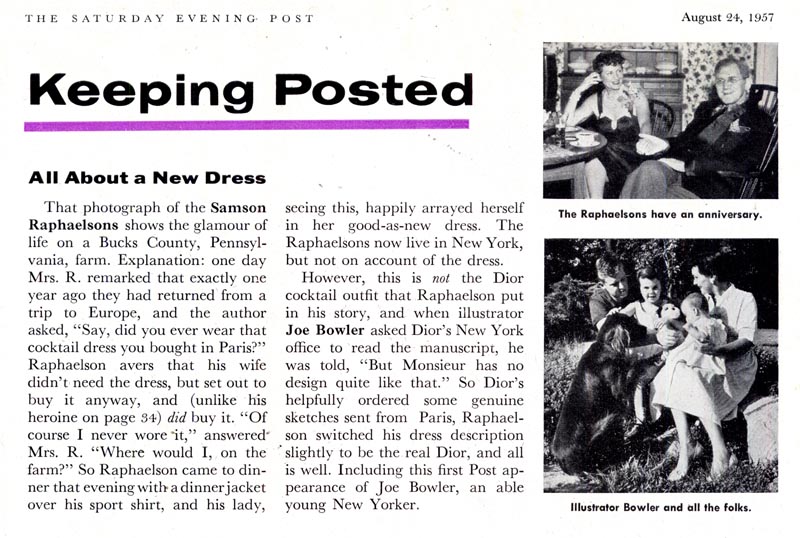
JB: There wasn't any of this reading the script and finding out for yourself, which was how it was most of the time. At the Post they really wanted this particular thing in the magazine. So you did it.
LP: So that wasn't typical of other magazines?
JB: No. Most of the time they'd give you the script and you'd read it and - in the end, I don't think they even talked to me about it. They'd just give me a script and I knew what they wanted.
(Below, Joe Bowler DPS from Redbook, October 1961)

JB: If it was anything that was a little off my regular thing I would do some studies and show them, but for the most part it was my choice. The Post was the only one that really got very specific.
(Below, Joe Bowler DPS from Redbook, October 1961)
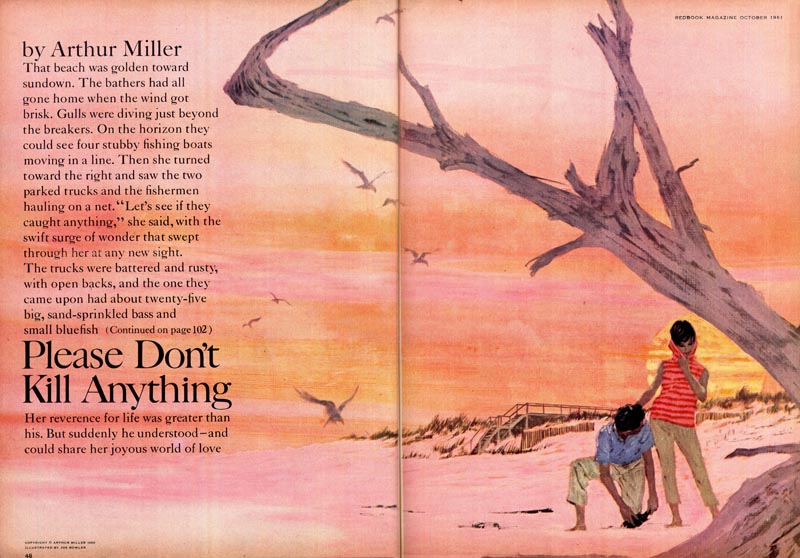
LP: Did you ever do any paperback covers?
JB: I did one or two. I think one of the art directors called and I said, "Yeah, I'll try one." But I think I only did one or two. And that was right at the end [of Joe's illustration career] so I don't remember much about it.
LP: What about movie posters? Did you ever do any of those?
JB: Yeah. Before I came down here, Joe Mendola, who was an art rep, got ahold of me and talked me into him representing me. He said, "Oh, you'll make a million bucks on these Hollywood studio movie posters." So I said, "Ok, I'd like a million bucks." And I started to do one and I'll tell you, you really had to do two or three major comprehensives - which means "finished paintings", practically - and even then they would say "No, I don't like this, I don't like that." So very rarely did I make any money on those.
I remember they wanted me to do "Scrooge" and they said "But we want to do it differently; we want to do a portrait of Scrooge coming right at you."
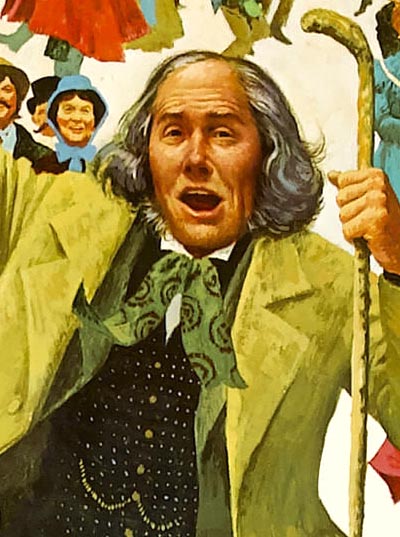
So I got all excited about doing this painting of Scrooge. So I painted a study, and they had a big long conversation about it, and I told Mendola, "They're not gonna buy this thing. They're gonna come up with the same old crap that they always do." And they did!
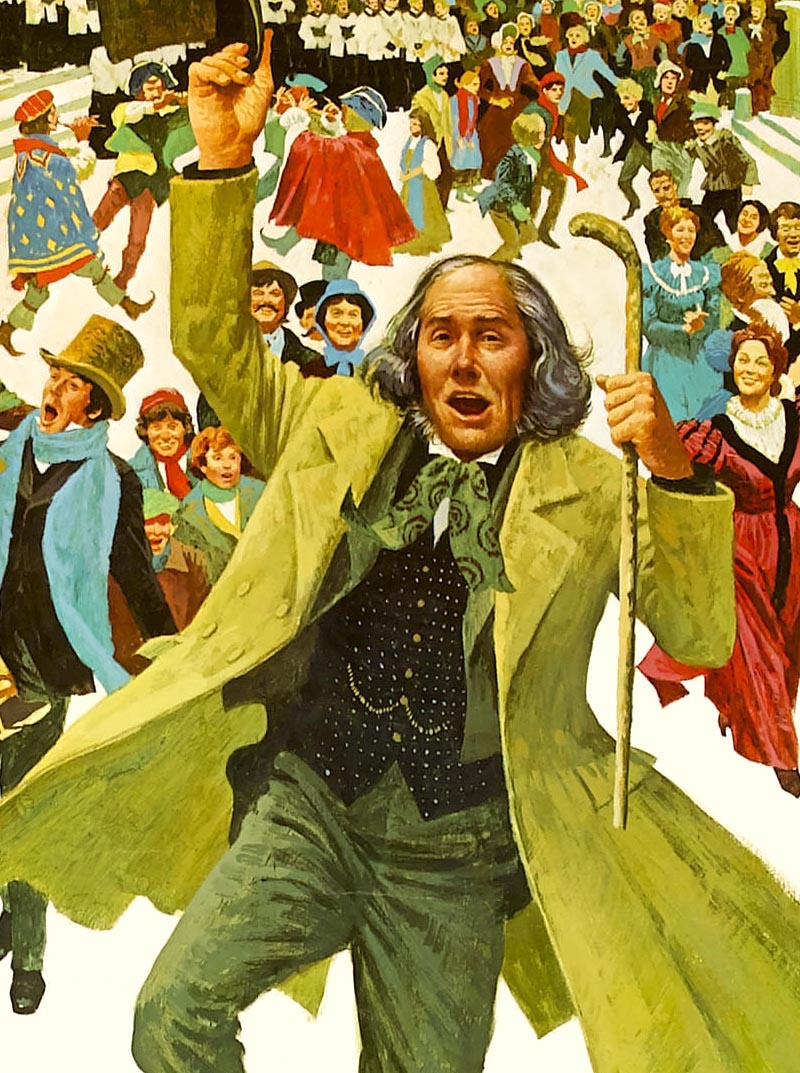
I ended up doing this painting of Scrooge with the whole damn town dancing around him - oh, it was just terrible! (We both laugh)
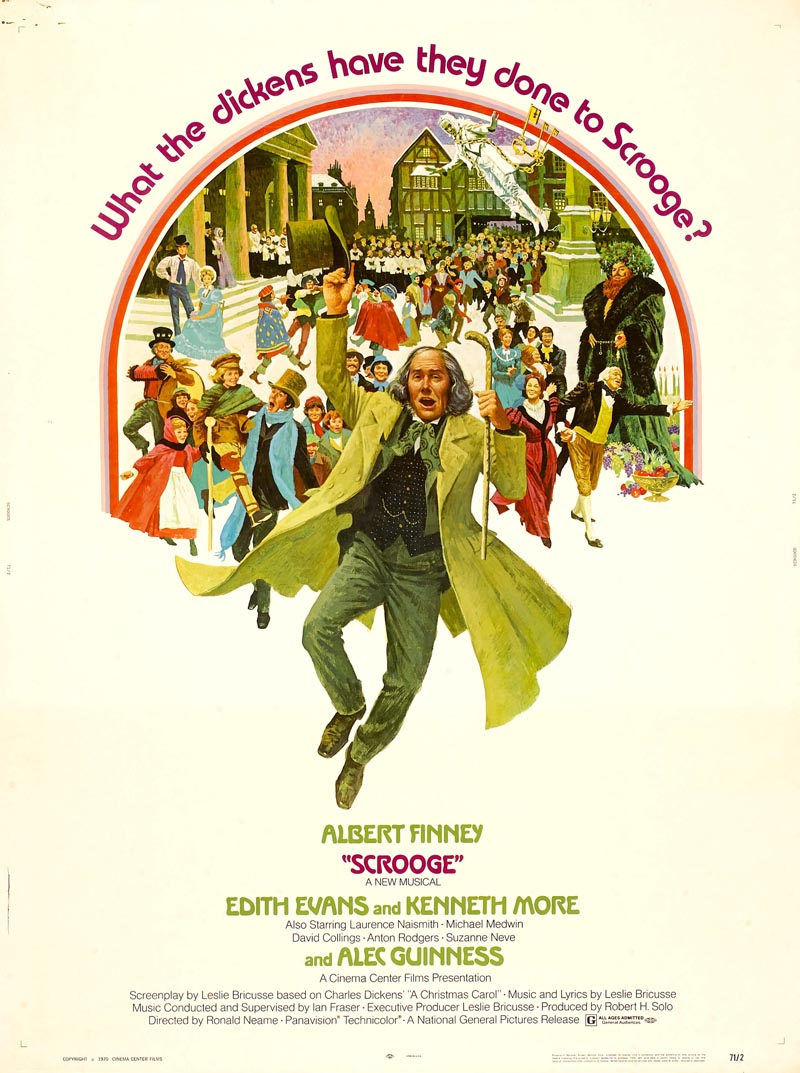
JB: That's one of the reasons I came south, because really, nothing, nothing Joe Mendola promised would happen came true. And of course he was the type of guy who would say, "Oh, you can just knock this out, Joe. Just knock this out." Until finally Marilyn said to him (emphatically) "Joe does not knock anything out!"
(We both laugh)
LP: Now, you talk about moving south, and certainly a lot of illustrators were doing that - moving to the south west and getting into doing cowboy paintings, western art. Guys like Frank McCarthy, Ken Riley, Howard Terpning... did you ever consider doing that?
JB: No. No. I had taken on a big account; twenty-one paintings for La-Z-Boy Chairs and I'd done fourteen, and I couldn't even stomach the idea of doing seven more. (we both laugh) And the art director couldn't believe it, he says, "Joe, this is the biggest account any artist has had for years! What are you talking about?" So I said, "Look, if I can get somebody to do the other seven of these that you'll ok, would you feel better?" So not knowing him personally, but knowing who he was, I called Howard Terpning! I said, "Howard, it's Joe Bowler. I've done fourteen of these ads and there are seven more and I've taken most of the photographs, so how would you like that?" Well, (Joe chuckles) I don't think I'd hung up the phone and he was pulling into my driveway. So I gave him those seven paintings, which he did a great job on. And it wasn't more than a year that I was down south and not much longer that he was out west.
(Below, Howard Terpning illustration for a La-Z-Boy ad, 1971)

LP: So was that basically the end of your commercial art career? Around the early '70s?
JB: Well, what happened was, Good Housekeeping was always after me. And I started to get these portraits, and the portraits were paying a lot more than illustrations.
(Below, Joe painting a portrait in his Hilton Head Island studio, 1973)
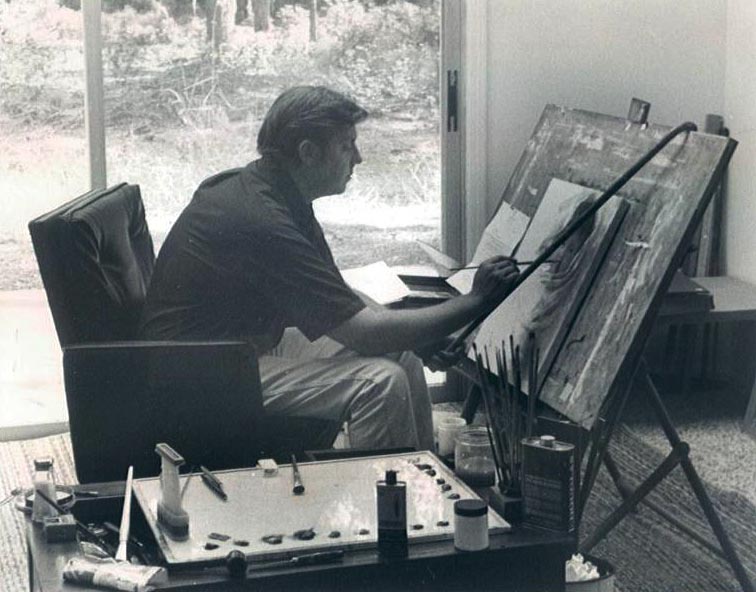
And I told the art director that I couldn't do them (illustrations), but I could send pictures of these portraits. So all through the '70s, I would do a portrait of a child and send an Ektachrome to Good Housekeeping and they would use it.
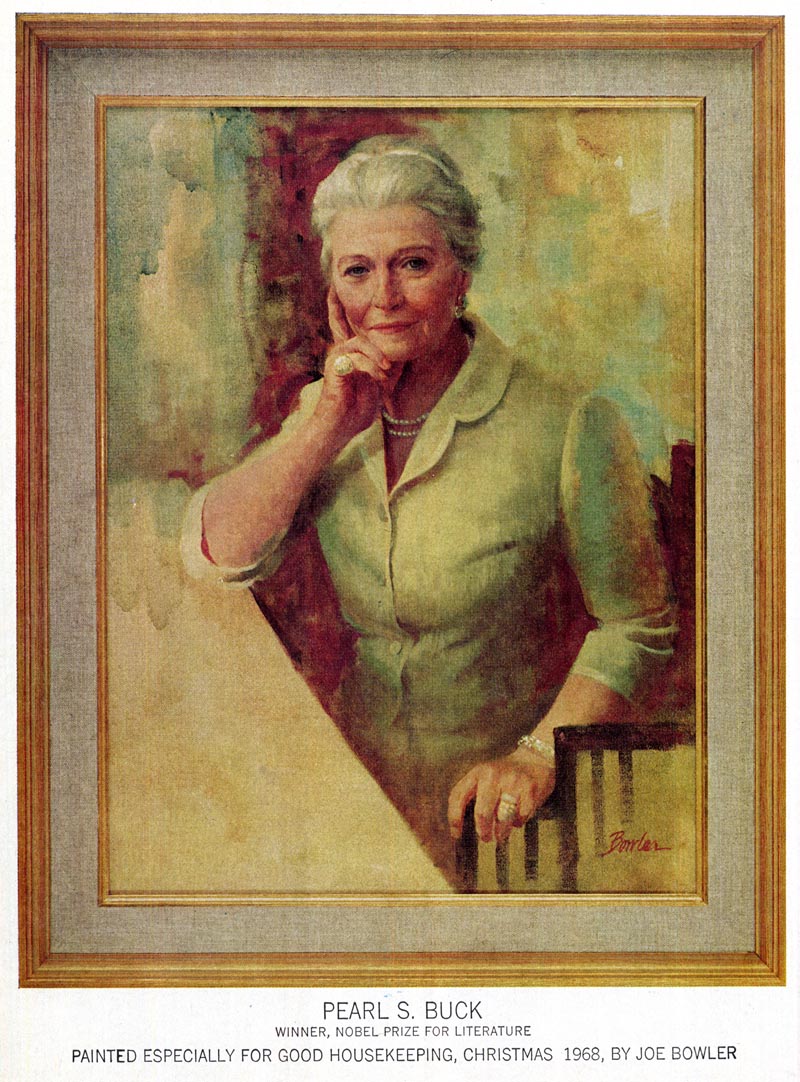
So I was in Good Housekeeping all through the '70s and people thought I was still doing illustration, but I wasn't. I was selling the portrait originals, getting the ok from the clients, of course, and then selling the Ektachromes to Good Housekeeping.
LP: Oohh, I see.
JB: In fact, one time I did this painting of just a beautiful girl's head looking right at the viewer. I actually just made her up out of several models. And at the time, Good Housekeeping had this monthly poll asking readers what they liked the best in the magazine, what made them stop and read something and how much did they read and so on. And they got the best response ever to the painting I did of that girl's head!
(Below, portrait study of Betty Crocker by Joe Bowler, year unknown)
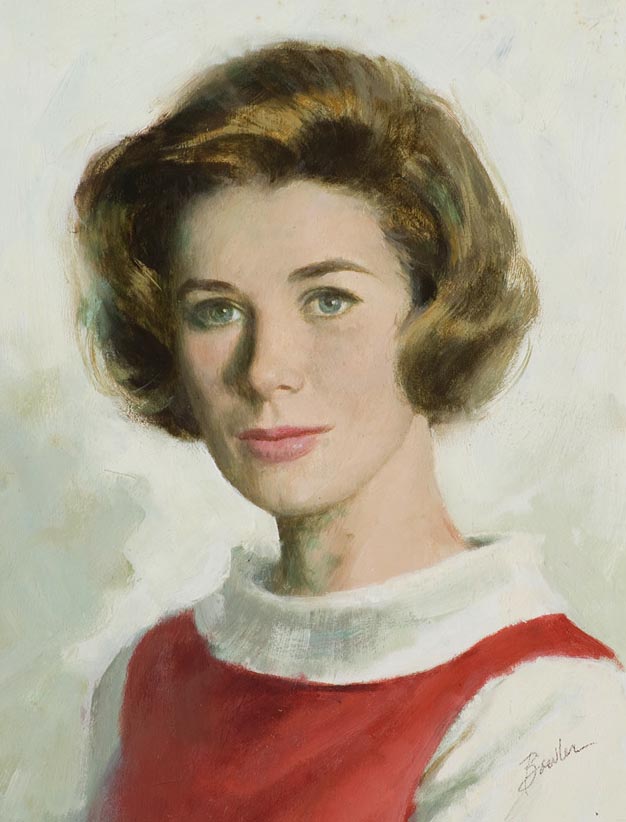
JB: So from that point on, if I just had a moment I would just paint a beautiful girl's head and sell it to Good Housekeeping. And Coby [Whitmore] did the same thing and Joe [DeMers] did the same thing! And they would just buy them because they got such a good response from the readership.
(Below, a recent example of Joe Bowler's portrait paintings, 2007)
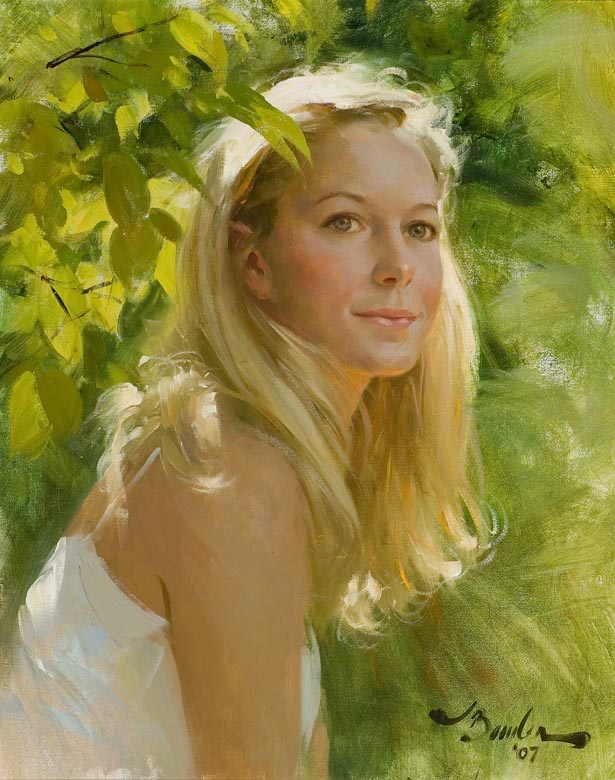
LP: So once you moved down south, did the portrait painting commissions come very regularly right away?
JB: Well, yeah. I had two manuscripts left over when I moved down here and once I finished those up, I was devoted entirely to going after the portrait business. Never did much advertising at all. It just seemed to happen. And then the big thing happened in the winter of 1982: there's a magazine called "Southern Accents" that was still fairly new at the time. And they had been doing a monthly article about southern artists. And a friend of mine who was Andrew Wyeth's agent got ahold of the editor and said, "You gotta put Joe's work in there." So she did. She gave me about ten pages of portraits.
(Below, four pages from the 1982 article in Southern Accents)
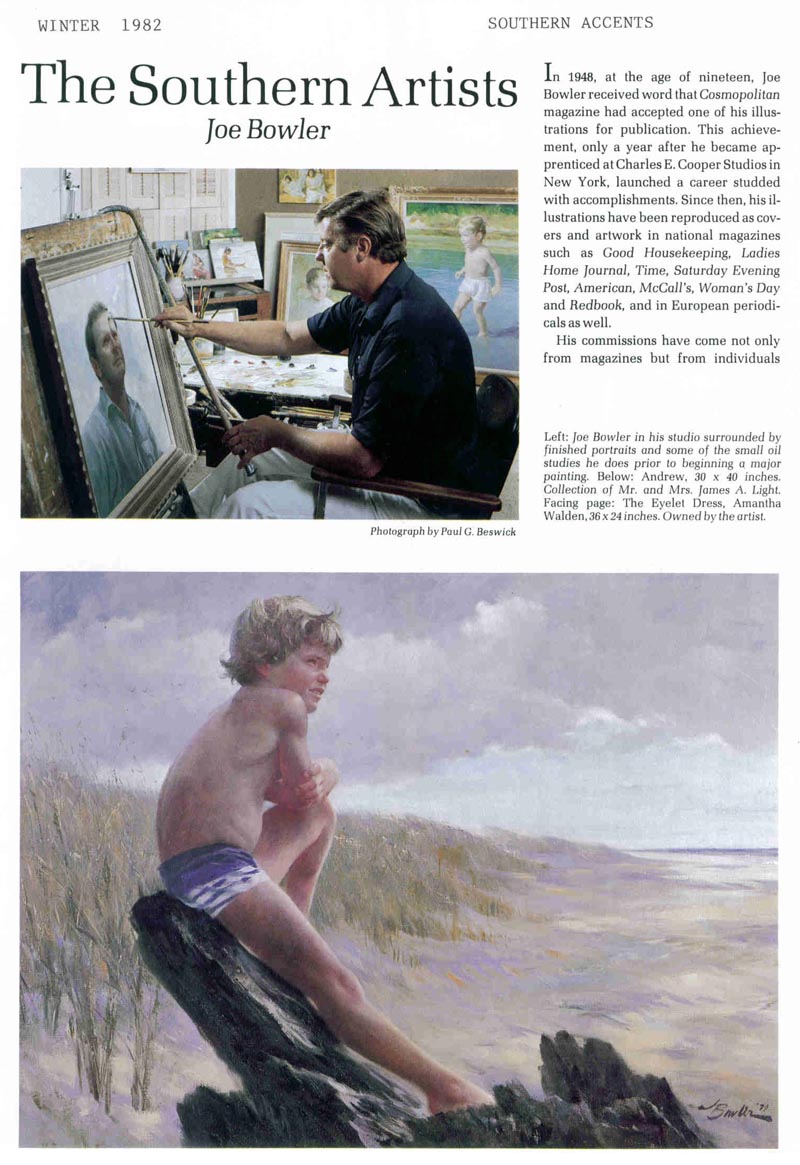
JB: Well, we got over 1,800 requests for portraits! We told the magazine after we got about 800 and they couldn't believe it.

JB: That magazine became the place that every portrait painter put ads in.
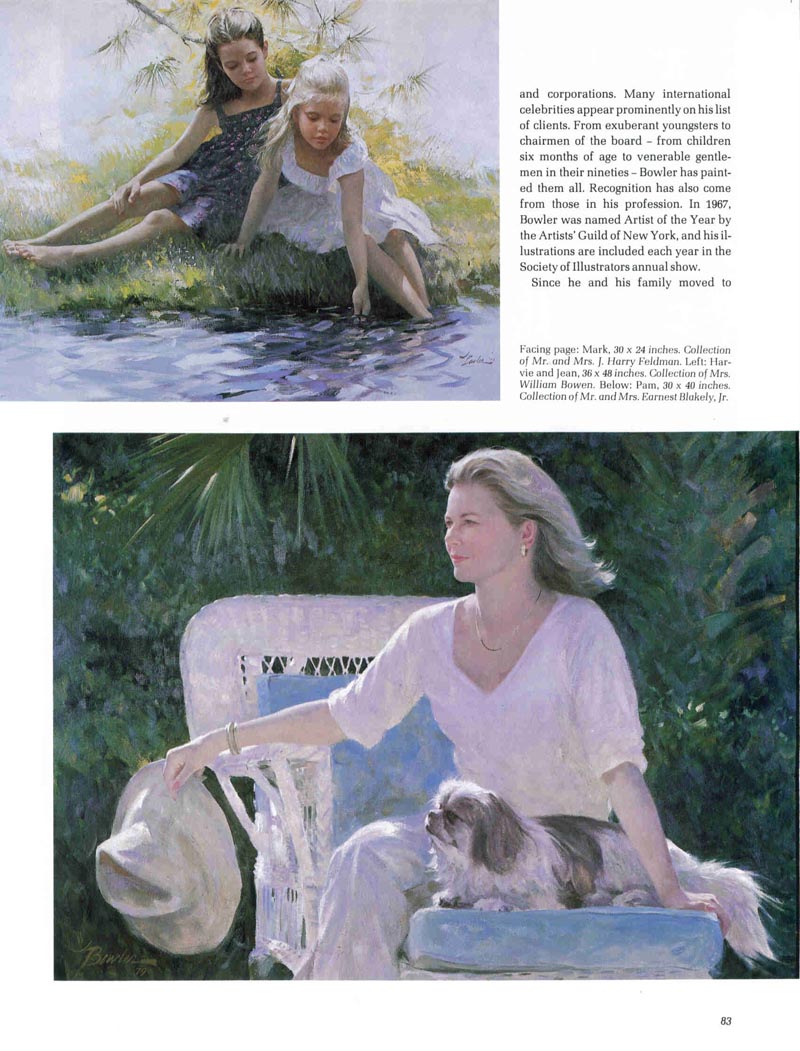
JB: And that put me in business for the rest of my life!
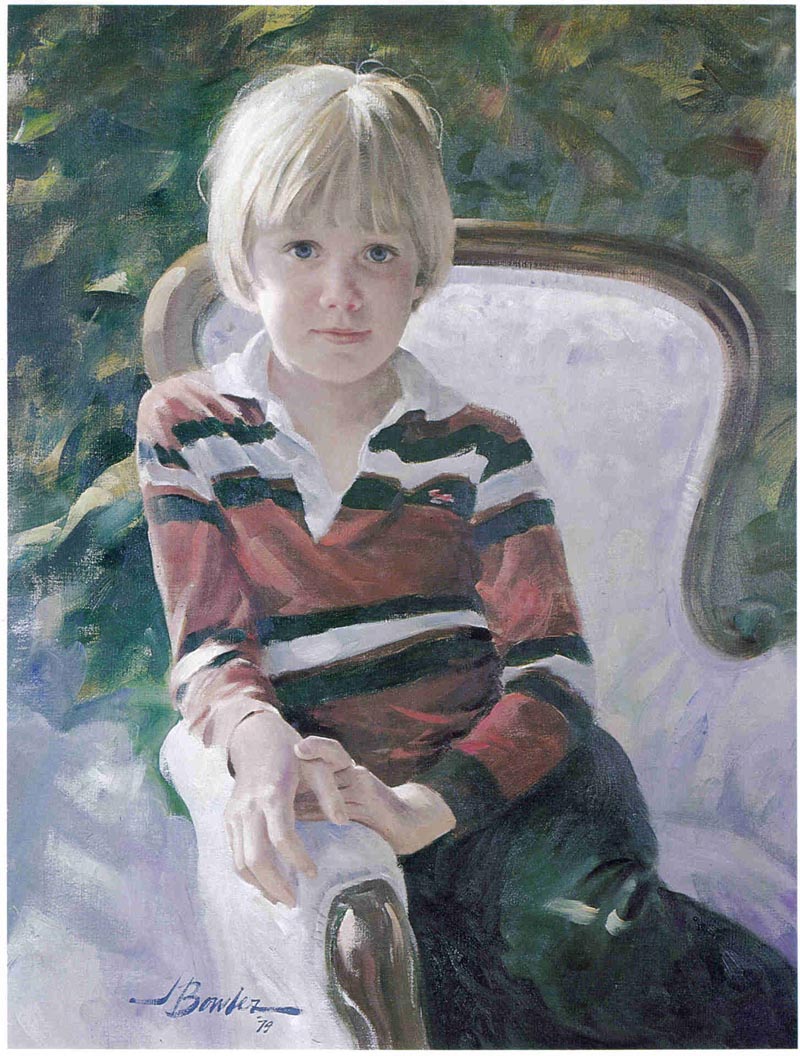
LP: Wow. Isn't that incredible. And as a matter of fact, I understand you have a client coming by this afternoon...
JB: Yeah, this is part of a family I've done for years and years. The mother of this child that I'm going to paint is a gal that I painted when she was two years old!
LP: Oh my gosh.
(Below, a recent example of Joe Bowler's portrait paintings, year unknown)
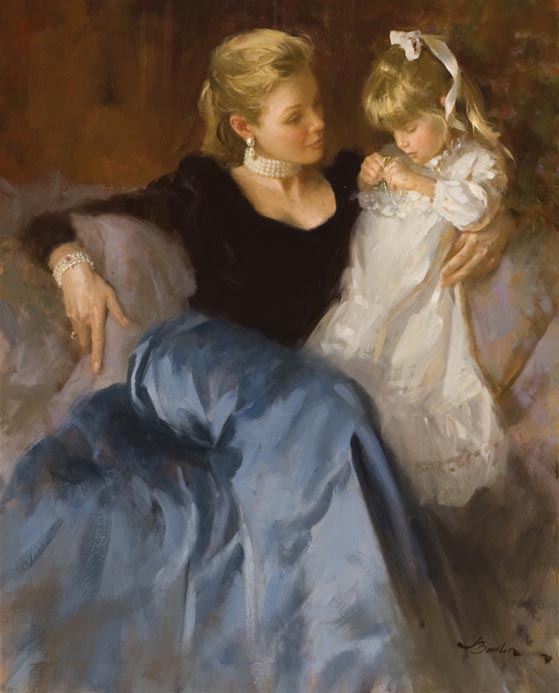
JB: And then I painted her again when she was married and had two children, so I did three of them... now this is another son and she's having that done. This is a family that has bought probably in the neighbourhood of, oh, thirty five portraits of kids. It's unbelievable.
(Below, a recent example of Joe Bowler's portrait paintings, 2007)

LP: It really is! I mean I knew your career had taken you into portrait painting but I really had no idea you had that kind of relationship with your clients.
JB: Oh yeah. In fact, when they get that way, I don't even call them clients - I call them patrons!
(We both laugh)
* My thanks to Joe Bowler for spending so much time talking with me - nearly four hours over two separate occasions! - to ensure all of my questions were answered. Thanks as well to Joe's daughter, Jolyn, for assisting in coordinating our schedules so her dad would be available at my convenience. If you enjoyed this interview, blame Murray Tinkelman. Murray has been gently prodding me to phone Joe Bowler for at least two years, something I kept meaning to do and putting off, and I am eternally grateful to Murray for his persistance. Thanks Murray!
* Thanks also to Lawrence Levine for providing scans of the article in Southern Accents magazine.
* To see recent works by the artist, visit Joe Bowler's website









Post a Comment